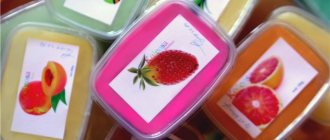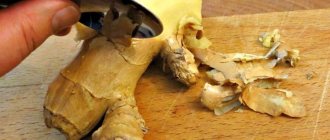Hibiscus (Chinese rose) is a tall, beautiful plant with large, bright flowers of different colors. The beautiful flower is a favorite among experienced gardeners and just amateurs. It is not whimsical in care and cultivation, and these are the main qualities of the plant’s rapid and unhindered growth.
On this topic:
Don't miss the moment when you cover your roses for the winter
Sep 5, 2020
Super-double and profusely blooming rose by Leonardo da Vinci...
Aug 24, 2020
Treatment of roses in the fall before covering for the winter -...
Aug 16, 2020
The best balcony flowers for the sunny side
Aug 14, 2020
BACK FORWARD 1 of 72
Basic information
Hibiscus is a house plant. It can be either annual or perennial. It may throw out just one flower, or maybe a large bush. It is an evergreen shrub or tree more than 2 m high. Some specimens found in nature reached 20 m in height and about 5 m in width, which shows a significant difference compared to domestic ones.
The flower has a long flowering period : the beginning occurs in early spring and the end in autumn. The hibiscus itself reaches a diameter of 15 cm, and also varies in shape - open bell or terry type.
Hibiscus, according to classification, has several types: white, lilac, scarlet, yellow and pink petals. There is also a red variety.
In addition, one bud can look unusual and combine several colors, like a painting in a picture.
Many people do not understand why Chinese rose flowers grow poorly.
The optimal conditions for the growth of hibiscus are:
- a well-lit room with sunlight;
- abundant watering in summer;
- the need to spray the sheets;
- fertilizing with organic matter.
In winter, it is necessary to keep the plant in a well-lit room, maintain moderate watering and no fertilizing.
It is necessary to feed the plant in warm seasons (spring and summer). In autumn and winter, there is no need for fertilizers, since the flower can easily do without nutrients. It is necessary to feed hibiscus once every 2 weeks.
Types and varieties of garden hibiscus
Garden hibiscus is represented mainly by varieties of Syrian hibiscus, but other plant species, as well as their varieties, are also grown in cultivation.
Syrian hibiscus (Hibiscus syriacus)
Surprisingly, it comes from China, not Syria. In nature, plants of this species reach a height of 5-6 meters and are deciduous shrubs with bright green ovate leaves about 10 cm long and single flowers of different colors. In addition to hibiscus with simple flowers, double hibiscus is grown in culture, and the form of the plant can be either bush or standard. Of the popular varieties, the most interesting are:
- Diana is a shrub up to 2 m high with white flowers with a diameter of about 12 cm, wavy along the edge of the petals;
- Vayelit Ilar Double is a very powerful upright growing bush with double or semi-double flowers of a violet-blue hue with red spots in the middle;
- Pink Giant - a bush with single pink flowers with a purple spot at the base of the petals;
- Carneus Plenus is a shrub with flexible shoots and double pale pink flowers with a purple spot in the middle.
In the photo: Syrian hibiscus (Hibiscus syriacus)
Trifoliate hibiscus (Hibiscus trionum)
The species is native to central and northern Africa, although today it is widely grown in all areas of irrigated agriculture. The root of this plant is taproot, the stem is straight, branched, up to 80 cm high. The leaves are tripartite, petiolate, alternate, with pubescence. The flowers are yellowish, up to 4 cm in diameter, with a dark red center.
A peculiarity of the species is that the flowers open in the morning for only a few hours, and close in the afternoon.
Flowering of plants of this species lasts more than a month, because a new hibiscus bud is formed in the axil of each leaf, and if optimal conditions are created for hibiscus trifoliata, new flowers will appear daily.
In the photo: Trifoliate hibiscus (Hibiscus trionum)
Hibiscus arnottianus
This type of hibiscus is distinguished by its medicinal properties. The aerial part of the plant is used to prepare a decoction, which is used as a laxative and also to purify the blood. The Arnotti hibiscus is native to Hawaii, from where it has spread to many countries around the world. In temperate climates, the flower is grown as an annual.
A distinctive feature of this species are tall stems, which sometimes reach 10 m, as well as fragrant flowers that can develop up to 10 cm in diameter. The petals are endowed with purple or scarlet veins, which match the tone of the pistil. If we take into account that in nature the Arnotti hibiscus grew among tall trees, then in the garden plot you need to take care of creating the most approximate conditions.
To ensure the full development of the plant, well-drained black soil is used when planting. Periodically you will need to feed the bush with organic and mineral substances. At the end of autumn, the rhizomes are transplanted to maintain the culture at home. Gardeners who grow this variety resort to some trickery - they keep the plant in a large container, which they take outside for the summer and take it indoors for the winter. Hibiscus propagation is carried out only by cuttings, which is due to climatic conditions: in our latitudes the seeds do not ripen.
Hibiscus Arnotti stands out for its medicinal properties: a decoction is prepared from the aerial part, which is used to cleanse the blood
Swamp hibiscus (Hibiscus moscheutos)
Swamp hibiscus can be grown both at home and in the garden, but the flower has earned the greatest popularity among lovers of indoor plants due to its brightness. The root system of this species is quite powerful and well developed. This is explained by the fact that in natural conditions the plant reaches a height of 3 m and forms a well-developed crown. The leaves of the swamp hibiscus have a glossy surface and a heart-shaped shape.
The culture is characterized by a long flowering period, which begins with the arrival of spring and lasts until mid-autumn. The flowers stand out for their brightness and variety of shades: bright red, purple, lilac. They reach 15 cm in diameter. Flowering after blooming lasts only one day: in the evening the flowers wither and fall off. After falling, a fruit is formed with a capsule containing seeds inside.
Swamp hibiscus stands out for its brightness. The plant has a long flowering period, which lasts from spring to autumn
To ensure long and abundant flowering, swamp hibiscus must be provided with sunlight and constant soil moisture, which should have a slightly acidic reaction. If the plant is located in the shade, the green mass will increase to the detriment of flowering.
This type of Chinese rose does not react in any way to a lack of fertilizer, which is its distinctive feature. However, an oversaturation of nutrients in the soil immediately affects the decorativeness of the plant. The best option for caring for the bush is mineral (phosphorus-potassium) and organic fertilizers.
Hybrid hibiscus (Hibiscus hybrida)
In addition to these two species, which grow both in the wild and in cultivation, hybrid hibiscus and its varieties are grown as garden plants. As already mentioned, this hybrid was developed by crossing three North American species - holly (armed), bright red and swamp hibiscus. Hybrid hibiscus are herbaceous perennials that are distinguished by spectacular and very large flowers. The best varieties:
- Galtonia: planting and care, growing in the garden
- Youth is a bush up to one and a half meters high, weakly branched, stems of a light yellow-green hue, from which shoots extend at an angle of 60º. The leaves are also yellow-green, three- or five-cut. Pink flowers with a white bottom and cup, up to 10 cm in diameter, have the shape of a tulip;
- Late is a compact bush of approximately a meter in height and the same diameter, densely leafy with jagged, oval-arrow-shaped leaves with light veins on thick petioles. The flowers, raspberry-pink with a lilac tint, in the shape of narrow bells up to 7 cm in diameter, open on short thick peduncles;
In the photo: Hybrid hibiscus (Hibiscus hybrida)
- Pale pink - a herbaceous bush up to 170 cm high with short shoots extending at an angle of 60º from the branches, with three-cut yellow-green leaves with a serrated edge and tulip-shaped pink flowers up to 12 cm in diameter with a white bottom and bowl;
- Pink-porcelain - bush up to 130 cm, branched stems, yellow-green, leaves deeply cut with a wide, protruding middle lobe, dusty yellow-green, on petioles up to 6 cm long. Large bell-shaped light pink flowers with a barely noticeable yellowness and a white throat, up to 12 cm in diameter, sit in bunches on short peduncles.
Proper care
Any flower shop has a large selection of fertilizers. Preference should be given to compost, which contains potassium, nitrogen and phosphorus. For best results, fertilizers should be mixed in water at room temperature.
To enhance growth, it is necessary to fertilize the root system, but do not allow substances that contain nitrogen to come into contact with the flowers of the plant - this leads to irritation. Excessive feeding or underfeeding can lead to death of the rose: the leaves of the plant will gradually turn yellow and fall off.
The plant must be replanted and its further propagation promoted. Basically, transplantation occurs in early spring in prepared soil. For the best effect, hibiscus should be planted in soil rich in fertilizers.
The recipe for the nutritional mixture is simple:
- turf soil;
- deciduous soil;
- humus soil;
- sand;
- peat soil;
- bone flour.
Before planting a Chinese rose flower in a pot, you need to make a layer of drainage in the container. After replanting, the plant should be trimmed in the shape of a crown. It is not recommended to replant mature hibiscus; it only needs to replace the top soil.
The rose propagates in July-August by cuttings.
The cuttings quickly produce roots and grow. They must be treated with a special substance (growth stimulator) and planted in prepared soil. Cuttings should be provided with a comfortable temperature (22−25 °C).
What to do when the castings of a Chinese rose turn yellow
On this topic:
The gentle charm of your garden - rose Pierre de Ronsard,...
Roses - preparation for winter, pruning and wintering...
Saving green oases: how and what flowers to choose for...
Roses in pots - home care for...
BACK FORWARD 1 of 71
If yellow spots begin to appear on the leaves of the hibiscus, this means that the plant has become infected. Over time, all the greenery will begin to spin and dry out, as a result it will fall off and the flower will die.
If you carefully examine a Chinese rose, you can see a mite. This parasite is very dangerous for the plant, so its neutralization is required. How to do it? It is necessary to spray the hibiscus leaves with pesticides, for example, “Aktelik” or “Fitoferm”. These substances are used to treat indoor flowers. To completely defeat the parasite (mite), it is worth disinfecting the plant at least three times. This procedure must be done once a week.
Experienced flower growers know that the best fight against flower diseases is prevention. To do this, it is worth treating Chinese roses with disinfectants once a month.
Origin and legends
Hibiscus came to Russia straight from China. In addition to this country, it is common in East Asia. In Malaysia, the rose is considered an ethnic symbol, and the plant's image is minted on local coins. There are many legends about the appearance of this flower.
A legend from East Asia speaks of a wanderer. The exhausted man lost his way. Exhausted by hunger and thirst, he sat down in the shade of the trees and asked the gods for food. And then bright red flowers fell on him. The traveler decided to try this plant and brewed aromatic tea. With every sip, strength and energy filled his body. Leaving the forest, the traveler took these flowers with him and distributed them to everyone he met, telling about the amazing tea properties of the flower.
This legend is not only about the hibiscus itself, but also about the world-famous hibiscus bush tea .
In addition, all parts of hibiscus are used in medicine; leaves and shoots are used as food. Flowers are used in the preparation of dyes: black for hair, purple for industry.
Flower of death
The rose was nicknamed a frightening nickname - the poisonous flower of death. A lot of bad things are said about the plant. Negative opinions are mainly in European countries, but in Asia this flower is loved and revered.
A large number of superstitions are associated with the flowering of roses. According to superstitions, if a Chinese rose blooms prematurely, it is a harbinger of death in the family. Most people believe that the fading of flowers is a good sign, but this is a prejudice.
Superstitions say that wilting is associated with the onset of a serious illness in a family member. Most often, the disease is asymptomatic.
If a person sees that the hibiscus is dying , then, according to superstitions, he should undergo a medical examination himself. There is also a judgment that a withering Chinese rose is deprived of satisfactory nutrition. In order not to weaken completely, it draws energy from all family members, causing tiredness, ailments, and headaches.
This superstition has another explanation - if a rose fades, it means that the flower takes all the negative energy in the house for itself, in this way it protects the owners from bad energy.
Often the flowering of a rose is associated with family disagreements, they say, the plant sows negativity, and it is the flower that is the culprit of irritation and aggression. In addition, a blooming rose attracts illness and bad luck. The maximum level of bad energy emission is associated with flowering time.
The bloom of hibiscus in the house is associated not only with death, but also with good future events. For unmarried girls, this predicts an early meeting with their betrothed, but if a rose blooms in the house of a married woman, then this predicts family disagreements and quarrels, which can be the initiators of divorce. Other superstitions say that a blooming rose is a symbol of new feelings and additions to the family.
Diseases and pests
Poor quality care entails negative consequences and various types of diseases:
- leaves become yellow or brown due to lack or excess moisture;
- due to low humidity or insufficient spraying, the leaves fall and wither;
- due to low temperature or dry air, buds fall off;
- from lack of fertilizing, the tips of the leaves turn brown.
The appearance of harmful insects is also possible, among which the most frequent unwanted guests are:
For insects, special preparations are used that can be found in gardening stores.
From what has been written above, we can conclude that hibiscus is welcome in any home. Caring for it is not so difficult, and it will bring a lot of benefits and pleasure - some varieties of the flower are suitable for brewing healthy and delicious tea.
Practical recommendations
Many people are afraid to keep a rose in their apartment, because it is called the “Flower of Death.” It is known that a person can influence the environment. If the owner and the flower are sick, then this is primarily associated with the energy of the “Flower of Death”, but not vice versa. It is a proven fact that if there is a good atmosphere in the family, then the plants in this house will bloom and not fade.
Interesting information: hibiscus is often blamed for illness and quarrels. Experts assure that flowers are capable of absorbing all the bad energy onto themselves, but this does not benefit them. In addition, it is believed that the Chinese rose helps to gain willpower and eliminates laziness, and increases creativity. Hibiscus also helps build close relationships between husband and wife, strengthening their marriage. Often the flower is placed near the bed.
There are a large number of negative signs about indoor roses, but most of its owners live happily and without illness, enjoy flowering and are not aware of superstitions.
There is no need to pay attention to negative interpretations, because thoughts tend to become reality. But this does not mean complete safety. For example, there is an allergy to hibiscus pollen; if a person is susceptible to this disease, then it is worth giving up the plant.
Required care for Chinese rose
Caring for Chinese roses is required at a young age and during the flowering period. These two steps will ensure the healthy growth of your beautiful plant.
Caring for a transplanted cutting involves the formation of a crown. As soon as the planting material has completely taken root and began to rapidly gain height, it should be pinched. Only in this case will the Chinese rose grow lush and blooming.
Caring for hibiscus during flowering:
- providing a sufficient amount of sunlight (but not direct sunlight on the leaves of the plant);
- fertilizing the soil;
- watering with warm water;
- spraying.
You can use homemade weak sweet syrup as fertilizer. This requires one teaspoon of sugar and 250 grams of warm liquid. Mix the ingredients until completely dissolved.
In the summer, when the heat sets in, it is advisable to take the hibiscus (Chinese rose) out onto the balcony. Place it in a corner where there is no direct sunlight, but there is good daylight. These conditions will ensure abundant flowering.
The Chinese rose is a “water plant”. Watering in summer should be done frequently. You can do it every day – morning and evening. Also, the flower should be sprayed.
Pruning shoots has a beneficial effect on the growth and flowering of Chinese roses. You need to inspect the bush and identify weak branches. They are cut off first, leaving only a shoot two centimeters long from the buds with leaves. The crown is also trimmed to make the flower decorative. If you trim the shoots correctly, the plant will be lush and well-formed.
Chinese rose diseases
Improper care of Chinese roses can lead to diseases.
The most common diseases of Chinese rose:
- fungal infection;
- spider mite;
- aphid;
- felt
Symptoms of a fungal infection: blackening of leaves and falling buds. To avoid this disease, you do not need to over-moisten the soil, and also avoid drafts and sudden changes in temperature.
Aphids and felt insects spread due to dry air and improper watering.
Signs about the Chinese rose
Every florist has heard many superstitions about the Chinese rose. Many of them are negative, although there are also positive ones.
Signs about the Chinese rose:
- growing a flower in a house where a family lives will bring quarrels between husband and wife;
- if the plant is pleased with its flowering unplanned, then troubles are coming soon;
- leaves have fallen for no apparent reason - you should expect one of the family members to become ill;
- Abundant flowering of hibiscus in the home of an unmarried girl promises an early meeting with a gentleman.
It is precisely because of the not very good reputation of the Chinese rose that it is grown not in residential buildings, but in administrative buildings and various institutions. Of course, you shouldn’t blindly believe all the signs, because falling leaves or sudden flowering can only be the result of improper care of the plant. See photos of garden hibiscus!
Growing in the garden
Hibiscus arrived in Russia from Asia; the climate is not very suitable for the flower. With the help of breeders, a special variety of Chinese rose was developed that can grow outdoors at such latitudes. This variety exceeds 3 m in height and can withstand very severe frosts. Therefore, its cultivation is recommended by botanists.
In order for a flower to survive the cold outside, it needs to be helped by artificial means. Winter in Russia is characterized by a drop in temperature below 30 degrees, so the flower needs to be well covered or replanted and brought into the house.
If you want to have this plant in your garden, then you need to know some nuances:
- Before planting, you need to find a suitable place where the plant will be protected from sunlight.
- The rose should be planted in loose and nutritious soil, not forgetting to water it as the soil dries out.
You can grow hibiscus by planting seeds (fruits) or cuttings. Which method to choose depends on the owner. Seeds must be sown in mid-winter. Damaged bushes must be sprayed with water. Roses should be planted in the ground after frost.
If the owner decides to cut a rose, then all the leaves must be removed from the shoot and placed in water. After long roots appear, the plant must be planted in a pot with nutrients; as soon as the rose gets stronger, it can be planted in the ground.
A small rose must be carefully insulated in winter, because a young plant is more susceptible to frost.










